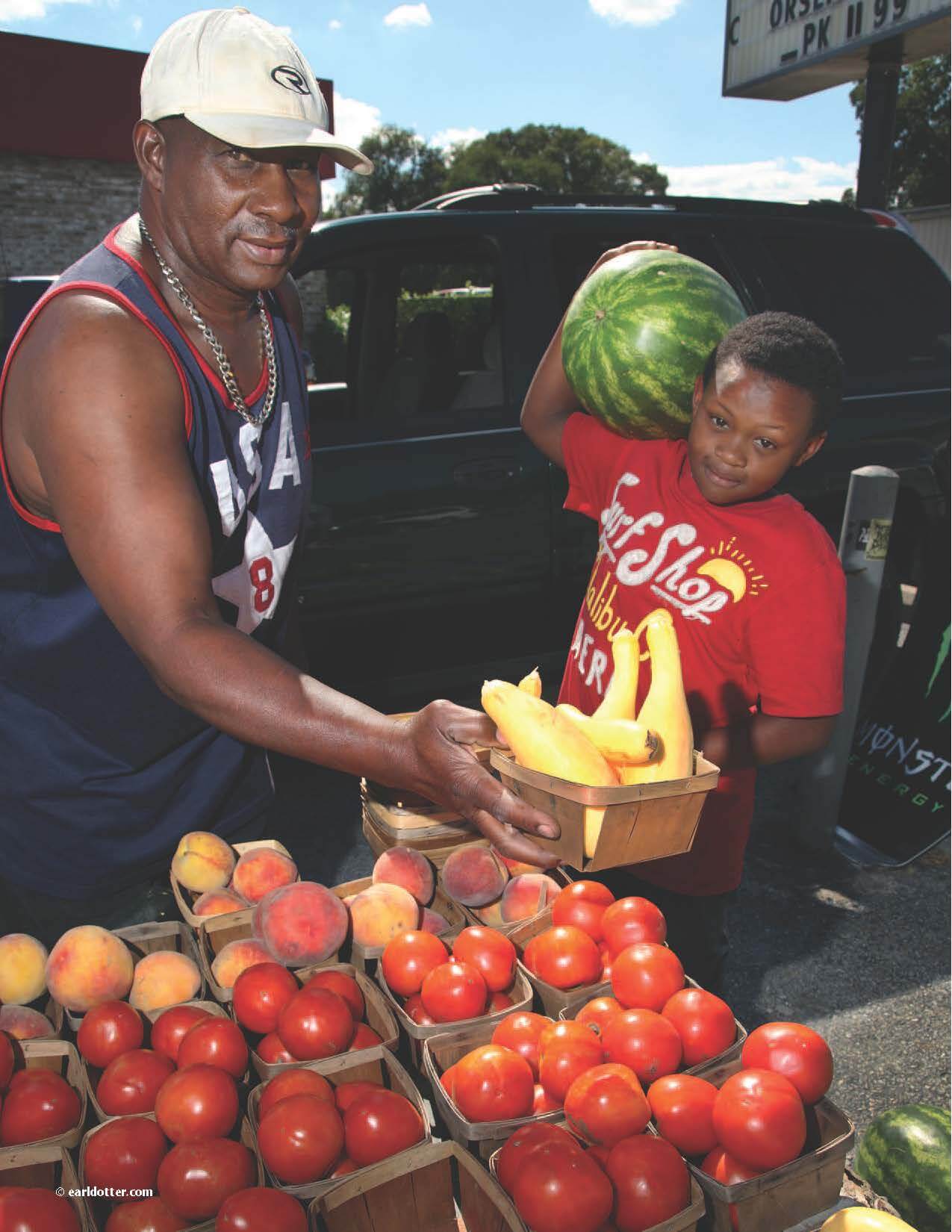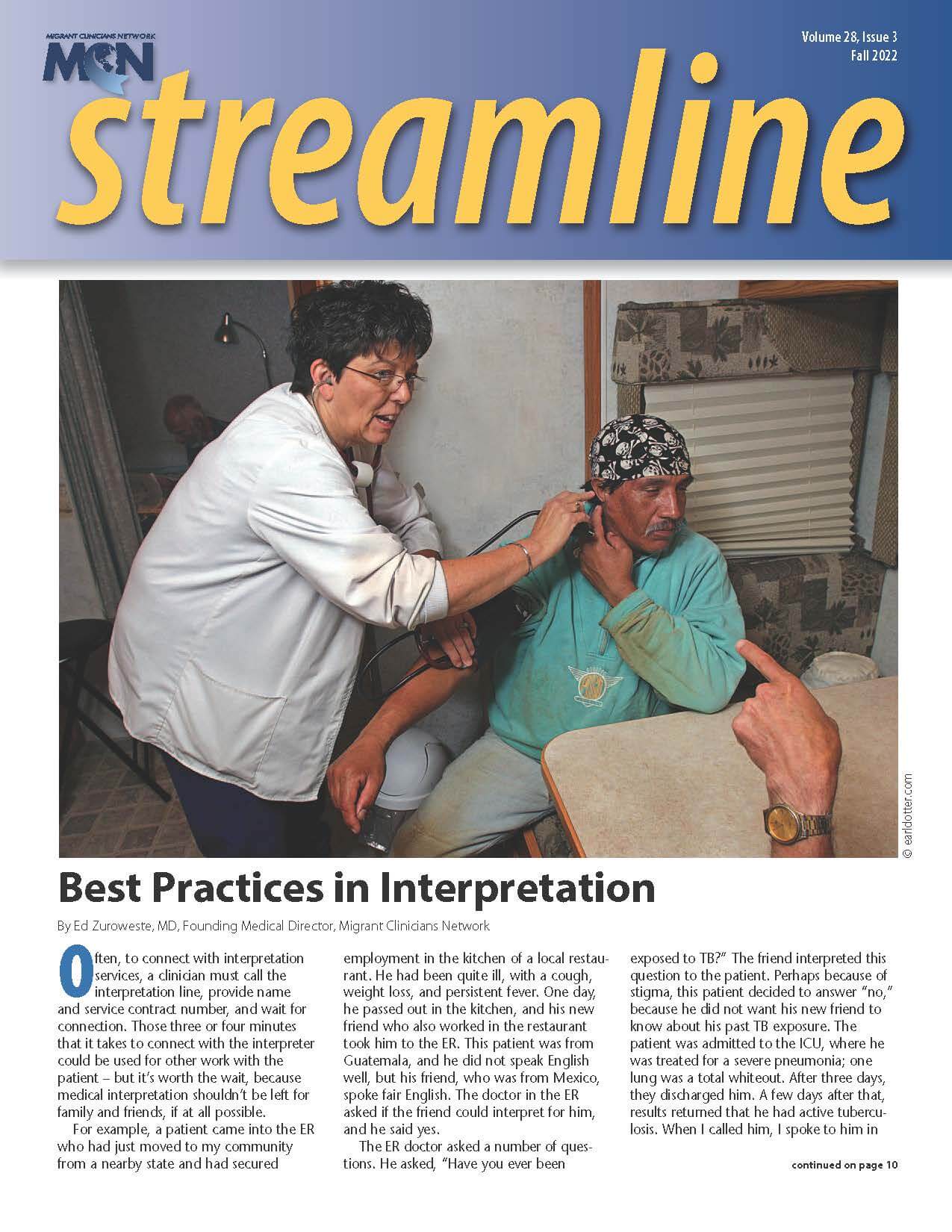
Food insecurity among migrant and immigrant agricultural worker families has grown in the last three years, as economic impacts and uncertainty, physical and social isolation, political rhetoric and policy, and a lack of a financial cushion left many unprepared to meet their families’ food needs during the crisis. While numerous studies show that food insecurity increased in the pandemic’s first years among the general population,1 few studies examine the food insecurity specifically among migrant agricultural workers in the US. One study found that 37% of surveyed Californian farmworkers experienced food insecurity during the first year of the pandemic.2 Of course, many of these families experienced food insecurity before COVID; a 2007 study of migrant and seasonal agricultural workers along the US-Mexico border found that 82% of surveyed households reported food insecurity.3
As most migrants to the US are from Mexico, the Caribbean, and Central and South America, Latinx families may serve as a proxy. Before COVID, Latinxs had the highest rate of food insecurity compared to other races.4 Numerous studies have found that Latinx households were more vulnerable to the economic shocks of COVID than the general population, due to pre-existing economic, social, and health disparities.5,6 Latinx households were disproportionately affected by COVID’s economic stressors and consequently endured greater food insecurity.7
To address COVID-induced food insecurity, the federal government increased supplemental food benefits for low-income households and funded free lunches for all children. Some states like California are continuing the free-lunch funding, but many COVID programs are winding down. Yet, many of these programs proved effective in addressing the ongoing and worsening food insecurity issues among vulnerable people. The federal government is now stepping up outreach for its programs, such as the US Department of Agriculture (USDA) Food and Nutrition Service (FNS)’s Special Supplemental Nutrition Program for Women, Infants, and Children (WIC),8 to address these issues.
WIC helps low-income pregnant and breastfeeding women, and their children under the age of five, to get high-nutrition foods and health care during these critical years in children’s development.
Alberto Gonzalez, Jr., Senior Advisor for External Engagement at FNS, shared that “more than half of all eligible [individuals] are not enrolled in WIC – there’s an enrollment gap…WIC advances equity, because we don’t all have access to healthy foods.” Under WIC, mothers take part in nutrition screenings, and then are provided with a benefits card to purchase basic healthy items like whole grains, peanut butter, fruits, vegetables, and beans. WIC takes into account cultural preferences by defining food categories but not specifying the products required – for example, whole-corn corn tortillas may be purchased as a whole grain option under the program. “Providing more variety and choice accommodates the diverse needs of WIC participants, including different ethnic or cultural needs,” specified 2018’s WIC Food Package Policy and Guidance.9
In late September 2022, the White House Conference on Hunger, Nutrition, and Health convened for the first time since 1969. At the conference, the Biden Administration unveiled a blueprint to end hunger and to reduce diet-induced chronic disease. The blueprint calls for reestablishing free school meals nationwide, among other strategies.10,11 Gonzalez believes that these federal initiatives will boost nutritious food intake and consequently increase health equity. “What’s important is the work after that conference,” Gonzalez stated. “There are opportunities to collaborate with different programs [with] equity as the focus.”
Resources:
Visit the National WIC Association for resources, advocacy, and events regarding the WIC program: https://www.nwica.org/
Read the National WIC Association’s issue brief on “Closing Nutrition Disparities: Boosting Whole Grain Intake to Strengthen Health Equity” at https://s3.amazonaws.com/aws.upl/nwica.org/whole-grain-rich.pdf
Read the Salud America! article, Advancing Health Equity for Latinos Through WIC, which features numerous resources specifically for Latinx communities:
https://salud-america.org/advancing-health-equity-for-latinos-through-wic/
Food Insecurity and Ultraprocessed Foods
Food insecurity does not equate to poor access to food. Oftentimes, families lack access to healthy, nutritious foods – either because they are unavailable or expensive compared to their ultraprocessed and nutrient-deficient counterparts. In rural areas, fresh food may be hard to purchase despite proximity to farms. Many agricultural workers shop at convenience stores that are located on the way to work and open during the late hours after work. Many foods like muffins, energy and granola bars, and sports drinks masquerade as healthy, but in fact contain numerous additives or preservatives. These ultraprocessed foods “hook our brains and overwhelm our biology because they contain unnatural combinations of fat and carbs along with sodium and other flavor enhancers,” says one recent Washington Post article. As a result, consumers of ultraprocessed food in one study consumed more and gained weight, even though the ultraprocessed and unprocessed diets provided to study participants contained similar amounts of fat, sugar, sodium, and fiber, and everyone was allowed to eat until satisfied.12 To properly address food security, healthy and unprocessed whole foods must be made available – and presented through culturally appropriate promotion.
Moving to Whole Grain
WIC influences grocery and convenience store practices, as tens of thousands of women use WIC benefits – and stores vie for their business. As a science-based nutrition program, WIC bases its “food packages” – what they call their food offerings, like bread, vegetables, and beans, that WIC participants can purchase -- on studies that demonstrate that WIC will increase the nutrition of the low-income families that rely on the program. In 2017, in response to a congressional act, the National Academies of Science, Engineering, and Medicine (NASEM) completed a scientific review of WIC food packages, after which they presented recommendations to update the food package to bring it in line with nutritional science.
One of the recommendations was a transition to 100% whole grains for the breakfast cereals and other products that WIC recipients can purchase. Whole grain products contain more fiber and minerals than their processed equivalents. Fiber-rich and intact foods like whole grains, vegetables, and beans can help prevent and/or reverse numerous chronic diseases, including heart disease,13,14 diabetes,15 and cancer.16 Since 2017, as a result of the NASEM recommendation and in anticipation of a possible change in WIC food requirements, many cereal companies have retooled their formulas to meet the 100% whole grain designation. A move to whole grains can support families in making healthy choices to reduce the chronic diseases that disproportionately affect Latinx communities. Proposed updates to the WIC food packages based on the 2017 NASEM report will be shortly released by the USDA and open to public comment.
Read NASEM’s 2017 recommendations: https://nap.nationalacademies.org/resource/23655/WIC-highlights.pdf
References
1 Wolfson JA, Leung CW. Food Insecurity During COVID-19: An Acute Crisis With Long-Term Health Implications. Am J Public Health. 2020;110(12):1763-1765. doi:10.2105/AJPH.2020.305953
2 Mora AM, Lewnard JA, Rauch S, et al. Impact of COVID-19 Pandemic on California Farmworkers' Mental Health and Food Security. J Agromedicine. 2022;27(3):303-314. doi:10.1080/1059924X.2022.2058664
3 Winkelman SB, Chaney EH, Bethel JW. Stress, depression and coping among Latino migrant and seasonal farmworkers. Int J Environ Res Public Health. 2013;10(5):1815-1830. Published 2013 May 3. doi:10.3390/ijerph10051815
4 Castillo F, Mora AM, Kayser GL, et al. Environmental Health Threats to Latino Migrant Farmworkers. Annu Rev Public Health. 2021;42:257-276. doi:10.1146/annurev-publhealth-012420-105014
5 Payán DD, Perez-Lua F, Goldman-Mellor S, Young MT. Rural Household Food Insecurity among Latino Immigrants during the COVID-19 Pandemic. Nutrients. 2022;14(13):2772. Published 2022 Jul 5. doi:10.3390/nu14132772
6 Janda KM, Ranjit N, Salvo D, et al. Correlates of Transitions in Food Insecurity Status during the Early Stages of the COVID-19 Pandemic among Ethnically Diverse Households in Central Texas. Nutrients. 2021;13(8):2597. Published 2021 Jul 28. doi:10.3390/nu13082597
7 Wolfson JA, Leung CW. Food Insecurity and COVID-19: Disparities in Early Effects for US Adults. Nutrients. 2020;12(6):1648. Published 2020 Jun 2. doi:10.3390/nu12061648
8 Food and Nutrition Service, United States Department of Agriculture. Leveraging the White House Conference to Promote and Elevate Nutrition Security: The Role of the USDA Food and Nutrition Service. Updated 29 September 2022. Accessed 24 October 2022. Available at: https://www.fns.usda.gov/nutrition-security/fns-role
9 Special Supplemental Nutrition Program for Women, Infants, and Children (WIC), United States Department of Agriculture Food and Nutrition Service. Food Package Policy and Guidance. March 2018. Accessed 24 October 2022. Available at: https://wicworks.fns.usda.gov/sites/default/files/media/document/WIC%20Food%20Package%20Policy%20Guidance%20Mar2018_508c.pdf
10 Ferguson E. White House Hunger Strategy Widens Free School Meals, Food Stamps. Roll Call. 27 September 2022. Available at: https://rollcall.com/2022/09/27/white-house-hunger-strategy-widens-free-school-meals-food-stamps/
11 The White House. FACT SHEET: The Biden-Harris Administration Announces More Than $8 Billion in New Commitments as Part of Call to Action for White House Conference on Hunger, Nutrition, and Health. 28 September 2022. Accessed 24 October 2022. Available at: https://www.whitehouse.gov/briefing-room/statements-releases/2022/09/28/fact-sheet-the-biden-harris-administration-announces-more-than-8-billion-in-new-commitments-as-part-of-call-to-action-for-white-house-conference-on-hunger-nutrition-and-health/
12 O’Conner A. What Are Ultra-Processed Foods? Hat Should I Eat Instead? Washington Post. 27 September 2022. Available at: https://www.washingtonpost.com/wellness/2022/09/27/ultraprocessed-foods/
13 Satija A, Hu FB. Cardiovascular benefits of dietary fiber. Curr Atheroscler Rep. 2012;14(6):505-514. doi:10.1007/s11883-012-0275-7.
14 Li S, Flint A, Pai JK, et al. Dietary fiber intake and mortality among survivors of myocardial infarction: prospective cohort study. BMJ. 2014;348:g2659. Published 2014 Apr 29. doi:10.1136/bmj.g2659
15 Hu Y, Ding M, Sampson L, et al. Intake of whole grain foods and risk of type 2 diabetes: results from three prospective cohort studies. BMJ. 2020;370:m2206. Published 2020 Jul 8. doi:10.1136/bmj.m2206
16 Dong JY, He K, Wang P, Qin LQ. Dietary fiber intake and risk of breast cancer: a meta-analysis of prospective cohort studies. Am J Clin Nutr. 2011;94(3):900-905. doi:10.3945/ajcn.111.015578
 |
Read this article in the Fall 2022 issue of Streamline here!Sign up for our eNewsletter to receive bimonthly news from MCN, including announcements of the next Streamline. |